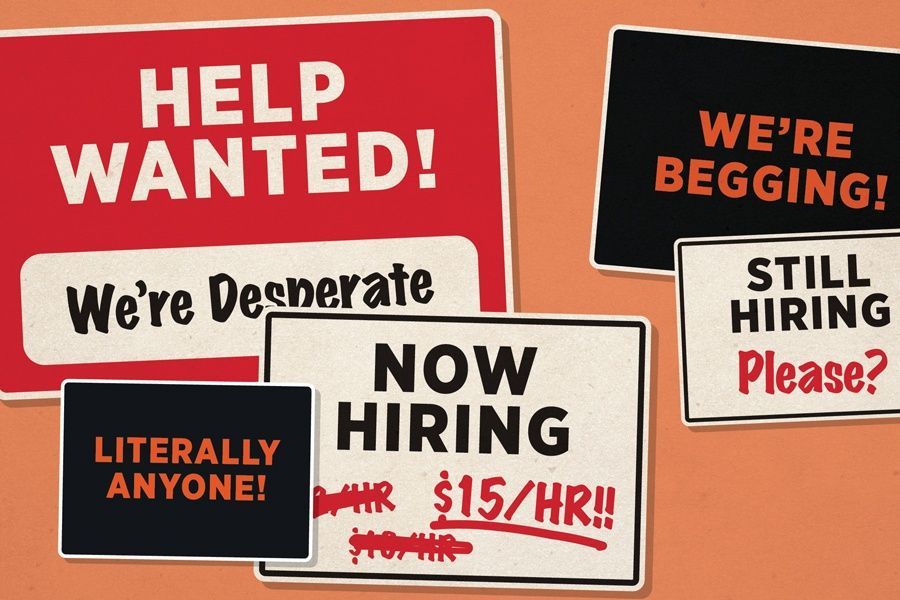For more than a decade we have been barraged with books and consultants telling us the problem with our organizational performance is that our administrators and supervisors don’t know how to be leaders or how to change our organizations. This is macro level leadership.
I propose that leadership should be about helping those we lead change. This is micro leadership. The leadership gurus have told us that we need to instill macro leadership in our supervisors and all will improve. It has been sold as the answer – and it is not.
In the human services field for the last decade or so we have been hammered with the need to achieve and improve outcomes and do more with less. We talk about the key issue being that Gen Y direct-service staff that are lazy, unwilling to go the extra mile, aren’t motivated, don’t care, and quit.
Let me suggest that neither Gen Y nor learning to macro lead is not the problem, but the real core issue is we have not taught our supervisors how to be successful supervisors:
- To successfully manage staff – to hold them accountable for performance
- And how to help them change to achieve that performance
Helping people change is micro leadership and that’s what we are not teaching.
And as organization we have continued to use progressive discipline with threats of punishment for not doing what we want. We threaten supervisors with punishment if they don’t get their staff to do their job. The studies and research have been telling us for over a decade that using a negative, punitive approach is why our staff disengage and don’t perform.
Numerous studies tell us that 70% of our staff is not fully engaged which means not fully committed, not achieving outcomes, and not performing optimally.
Gallup’s 2013 State of the American Workplace reports 20% of American workers are “actively disengaged” from their jobs. Another 50% are “not engaged” in their work (i.e. present but uninspired). That’s 70% of our workforce not living up to its potential and who are giving their employers less than their full talents.
And yet we have not taught our supervisors how to positively engage, how to stay positively engaged and how to hold our supervisees accountable for their performance….
79% of employees who quit their jobs say a lack of appreciation is a key reason they left, based on a 10-year study of 200,000 employees and managers. The Carrot Principle , Adrianne Gostick, 2007.
USA Today, April 12, 2008 reported, “ HR Magazine found that 95% of exiting employees blamed an ineffective manager (supervisor).”
Accountability is the bedrock of good management, adapted from the Thought Leaders website, November 22, 2014.
Accountability is the bedrock of good management. That doesn’t mean successful managers are all tyrants, though. Many leaders have learned that the best way to hold people accountable is to help them improve their performance.
Coaching, mentoring, and providing constructive feedback tells them what you expect and how they can fulfill your requirements better than reprimanding them when they fall short. You’ll develop a positive reputation that your employees and peers will respect instead of one based on fear and intimidation.
Doing performance coaching (supervision for success) right means 42% higher productivity. Bersin by Deloitte
We may have offered them a workshop on engagement or a 3-part training on how to be a success-focused supervisor BUT what we haven’t done is hold them accountable to practice in that manner. Our organizational structure and practice is to still work from a glass is half-empty – punishment as the way to motivate staff and then we wonder why there is not more accountability, improved performance, and better outcomes.
As I have been discussing for the last three issues of Leading Outside the Box , the organization and its leaders must become willing and able to change organizational practices so the culture supports a positive approach.
The CEO and the HR folks have to be willing to let go of long-standing practices and make policy and procedural changes that support what we are trying to do –
- Move from a negative to a positive work place
- Move from threats through progressive discipline to a personal responsibility model
- To align organizations policies, procedures, and practices to support a positive personal responsibility approach
- The senior leadership models with supervisors so they experience the practice themselves
- Understand that this is a recovery, a transformation. It is a process, not an event, which could take years to fully realize. There are no short cuts. Training will not make it happen.
Over the past decade I worked with dozens of human services organizations, both public and nonprofit, and the struggle is the same:
- Hiring “right” or “good” staff
- Retaining staff
- Improving outcomes
- Holding staff to standards of practice, aka accountability
John Maxwell, a leading Leadership Guru in Developing the Leader Within You , says:
“For 23 years I have been responsible for developing people. I have yet to find a person who did not do a better work and put forth greater effort under a spirit of approval then under a spirit of criticism.
People want to feel important.
People are not motivated by organizational charts, they respond to people.
People do not care how much you know until they know how much you care.
What motivates people:
- They feel they are making a positive contribution.
- They are part of goal setting and give input.
- They are positively motivated.
- They receive recognition for their efforts and contributions.
- They have clear expectations.
How you want direct-service staff to perform starts with the ED/CEO – the person in charge.
You must be willing to invest long-term in making those four struggles your strategic goals. If you look at your organization’s strategic plan, are these (plus funding) your strategic goals? If they are, that means you have made a four-year commitment to making these your priority, which also means you take annual action to realize these goals. And if you make them your strategic goals and you achieve them, what you will get is a stable, competent workforce that is achieving outcomes and operating at defined standards of practice.
As a leader that means you must first train supervisors how to be good managers.
Managers are focused on performance and accountability – that is a skills set. That is what Supervision for Success teaches in a success, non-punitive focus.
And you need to teach them how to be a good micro leader – a person who has the skills to help those they lead improve.
I am not talking about being a macro leader, I am talking about becoming a successful micro leader – how you work with those you supervise in a way that they become voluntarily willing to change, to improve, to do better.
Once we teach our supervisors how to manage and micro lead with the staff they supervise, then we can teach them how to lead at a macro level as a way to help them grow and advance. This also means you have to use these concepts.
The leadership gurus have made the assumption that everyone knows how to manage and that is a false assumption.
If we want good managers and good leaders at a micro level (individual level) then we have to train and support them to become able to do that.
If you are a leader and you want a better performing staff and agency, then you must lead that change, not delegate it to others because everyone knows that if it is really important, the CEO/ED will be the one leading the effort.
LEADING FROM OUTSIDE THE BOX is a monthly newsletter for human services leaders.
Its purpose is to challenge your thinking and help you improve organizational and outcome performance.
To receive your copy free, simply email Jeff Bormaster and ask to be added to the mailing list. Feel free to share these newsletters with other human services leaders, simply include the contact information.
You can read previous issues of Leading Outside the Box at www.jeffbormasterconsulting.com/topics











